

JARDIM DO PALÁCIO DE SANTANA
Presidência do Governo Regional dos Açores
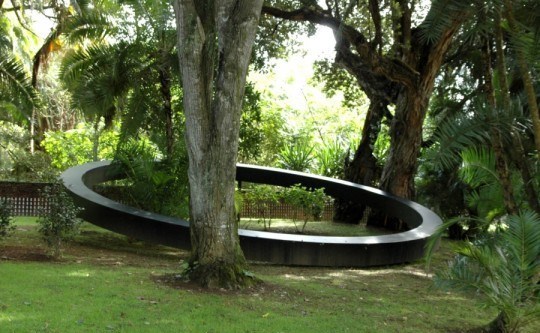
Português

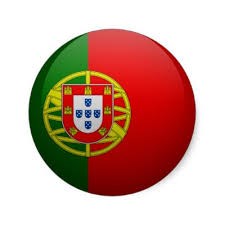
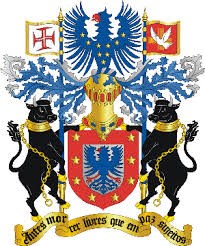
O Palácio de Sant’Ana ou Jácome Correia, envolvido por um dos mais emblemáticos «jardins históricos» açorianos, é datado do período áureo da laranja. É património da Região Autónoma dos Açores, sede da Presidência do Governo desde 1980 e Residência Oficial do presidente do Governo dos Açores.
O Palácio de Sant’Ana e o seu parque foram construídos em meados do século XIX, pelo morgado José Jácome Correia, e acolhem desde 1980 a sede da Presidência do Governo dos Açores.
Conjunto classificado, o seu jardim botânico é um importante museu vivo e património natural e histórico dos Açores. É um testemunho do seu tempo, elemento importante na história da arte dos jardins, que deve ser defendido para benefício das próximas gerações.
JARDIM JÁCOME CORREIA
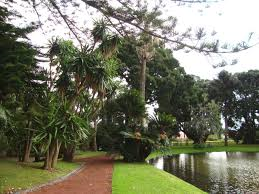
O jardim e parque de Sant’Ana são reflexos de um tempo de desenvolvimento económico, de promoção da agricultura e de o aparecimento de uma classe capitalista, muitas vezes nobilitada, com fortes contactos com a Europa. Cria-se, assim, um gosto e conhecimento que terá conduzido à criação de jardins inovadores relativamente à tradição local, e que deixaram, em S. Miguel, testemunhos notáveis da arte paisagística no século XIX.
Foi José Jácome Correia quem o mandou traçar. As linhas de erudição e riqueza que aplicou à casa também se estenderam ao terreno envolvente que ocupa uma área de cerca de 4 hectares. Ali trabalharam Peter Wallace, autor do plano e estufa, e François Joseph Gabriel, sendo frequentes os contactos com jardins nacionais e europeus. Tem um traçado amplo e vistoso, onde podemos identificar quatro zonas distintas: o “parterre” frontal (com lago de perímetro sinuoso, relvados e canteiros de flores) e jardins laterais, a horta, o jardim intimista e a quinta de quartéis.
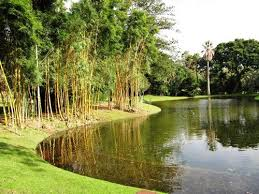
A norte do Palácio encontram-se construídos a Estufa (com criação de orquídeas, antúrios, bromélias, fetos e avencas) a Torre da Laranja e as Cocheiras ou Cavalariças.
Os muros do jardim têm um extenso revestimento de azulejos policromados com brasões da família e alguns pavilhões artísticos em madeira. A força vegetal do jardim é extraordinária, sendo um verdadeiro monumento natural e exemplar sobrevivente do colecionismo botânico oitocentista.
Na fachada principal do Palácio de Sant`Ana encontra-se a escultura “Parar o tempo”, de Rui Chafes.
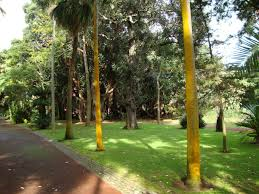
No jardim deste Palácio existem: camélias, azáleas e hortênsias, árvores de grande porte, um campo de vegetação endémica e uma grande variedade de espécies exótica se subtropicais (banksias, araucárias,melaleucas, yuccas, cicas, buchos, magnólias, jabuticabas, dragoeiros). O soberbo metrosídero, oriundo da Nova Zelândia, junto ao “parterre” central, é dos mais belos que existe na ilha.
Perto do arruamento nascente está colocada a escultura“ Pararo tempo”(2009),em ferro, de um dos mais importantes escultores portugueses contemporâneos, Rui Chafes. No jardim lateral poente, encontra-se uma obra da artista açoriana Graça Costa Cabral, denominada “Ilha”, em ferro e mármore.
Este jardim está classificado como Monumento Regional desde 2000.
O Palácio de Sant’Ana
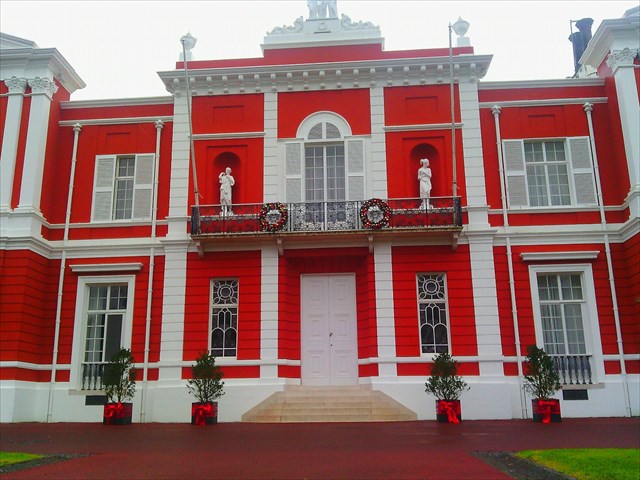
O Palácio de Sant’Ana, sede da Presidência do Governo da Região Autónoma dos Açores e Residência Oficial do Presidente do Governo, desde 1980, encontra-se situado no meio de um magnífico parque, na parte norte da cidade de Ponta Delgada, vizinho do Jardim José do Canto e da Ermida de Sant’Ana. É um espaço cimeiro de representação institucional, onde decorrem os atos e eventos oficiais da maior solenidade, tendo aqui permanecido e visitado presidentes da República Portuguesa, monarcas e membros de famílias reais, assim como personalidades de relevo no plano regional, nacional e internacional.
No passado, foi propriedade da família Jácome Correia, da classe terra-tenente da ilha de S. Miguel, ainda mais enriquecida pelo comércio da laranja com Inglaterra. Este conjunto patrimonial foi mandado construir pelo morgado José Jácome Correia (1816-1886), a partir de 1846, estando em 1866 o palacete já construído e habitado, assim como o seu jardim plantado. Por falta de descendência, sucedeu-lhe na posse sua mãe e, depois dela, seu único irmão Pedro Jácome Correia (1817-1896), 1ºconde de Jácome Correia, Pardo Reino, deputado e chefe local do Partido Regenerador, como título em duas vidas de Conde de Jácome Correia. Herdou-o depois Aires Jácome Correia (1883-1937), que viu estes espaços serem considerados Palácio Real, por neles terem permanecido o rei D. Carlos e da rainha D. Amélia durante a visita régia efetuada aos Açores em1901.Será a filha segunda do Marquês de Jácome Correia, D. Josefa Gabriela Borges de Sousa Jácome Correia Hintze Ribeiro que, em1977, vende a propriedade à Região Autónoma dos Açores.
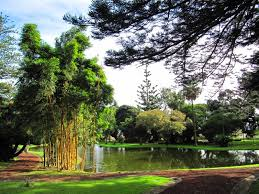
Constituído em estilo neoclassicismo, o Palácio aproxima-se do tipo de arquitetura em voga na Europa da época. O arquiteto não é conhecido, mas pensa-se que José Jácome terá encomendado o projeto em Londres, presumivelmente através do seu primo, amigo e vizinho José do Canto. É constituído por três corpos, tendo a fachada principal ao alto um grupo escultórico mitológico representando Apolo entre duas Musas e, ao nível do rés-do-chão, nas fachadas laterais, quatro estátuas em mármore, e presentando a Escrita e a Leitura (a nascente) e a Indústria, a Navegação (a poente).
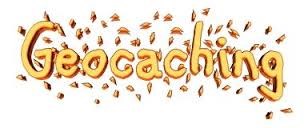
INFORMAÇÕES:
Esta cache faz parte da GeoTour AZORES, desde 19 de junho de 2016 e fez parte daGeotour Ilha Verde/GreenIsland (a primeira GeoTour portuguesa), entre 18 de junho de 2015 e 18 de junho de 2016.
A CACHE:
A cache encontra-se no Jardim do Palácio de Santana (Presidência do Governo Regional dos Açores), local de muito simbolismo e importância para a Região Autónoma dos Açores. Ao chegar à receção, dentro do horário de abertura ao público, deverá adquirir o seu bilhete de entrada. Ao visitar o jardim deverá fazê-lo somente através do percurso autorizado.

A caixa tem um formato NÃO convencional.
Deve levar consigo material de escrita.
Por favor, não nem postem fotos que possam denunciar a cache.
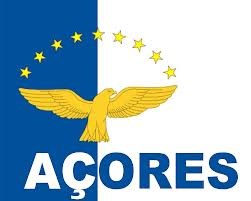
HORÁRIO:
3ª a 6ª feira, das 10H00 às 16H00
Sábados: 9H30 às 18H00




SANTANA PALACE GARDEN
Presidency of the Azorean Regional Government
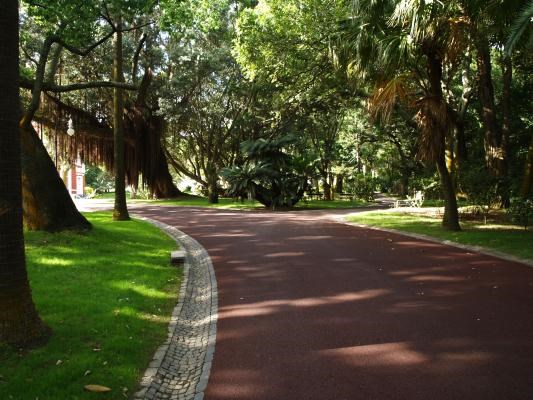
ENGLISH

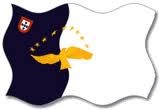
The St. Anne Palace or Jácome Correia, surrounded by the most emblematic "historic gardens" from the Azores, is dated to the golden period of the oranges. It is heritage of the Azores, headquarters of the Government Presidency since 1980 and official residence of the President of the Government.
The St. Anne's Palace and its park were built in the mid-nineteenth century by José Morgado Jácome Correia, and have hosted the seat of the Presidency of the Government since 1980.
Classified as a botanical garden it is a living museum and important natural and historical heritage of the Azores. It is a testimony of his time, an important element in the history of art of the garden, which must be defended for the benefit of future generations.
“JÁCOME CORREIA” GARDEN
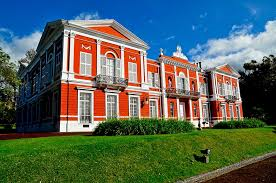
Santana Garden and Santana Palace, are reflections of a time of economic development, promotion of agriculture and the emergence of a capitalist class, often ennobled with strong contacts with Europe. Thus it created taste and knowledge that resulted in the creation of innovative gardens in relation to local tradition, and left that in S. Miguel, remarkable testimonies of landscape art in the nineteenth century.
It was José Jácome Correia who ordered others to grow it. The scholarship and wealth of lines applied to the house also extended to the surrounding land which covers an area of about 4 hectares. There worked Peter Wallace, author of the plan of the greenhouse, and François Joseph Gabriel, with frequent contacts with national and European gardens. It has a large and showy track where we can identify four distinct areas: the "parterre" front (with a meandering perimeter of the lake, lawns and flower beds) and side gardens, the garden, the intimate garden and the fifth barracks.
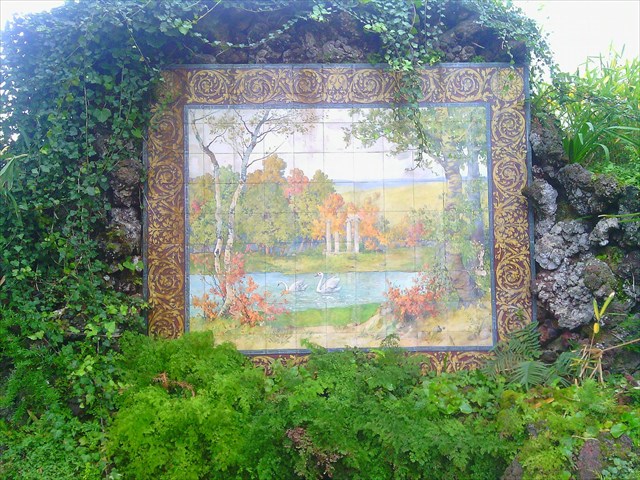
North of the Palace there were constructed Greenhouses (with creation of orchids, anthuriums, bromeliads, ferns and maidenhair) the Orange Tower and the stables.
The garden walls have an extensive tile flooring with polychrome coats of arms of the family and some artistic wooden pavilions. The vegetable garden force is extraordinary, being a true natural monument and surviving example of nineteenth-century botanical collecting.
The main facade of the Palace Sant`Ana is the sculpture "Stop the Time", Rui Chafes.
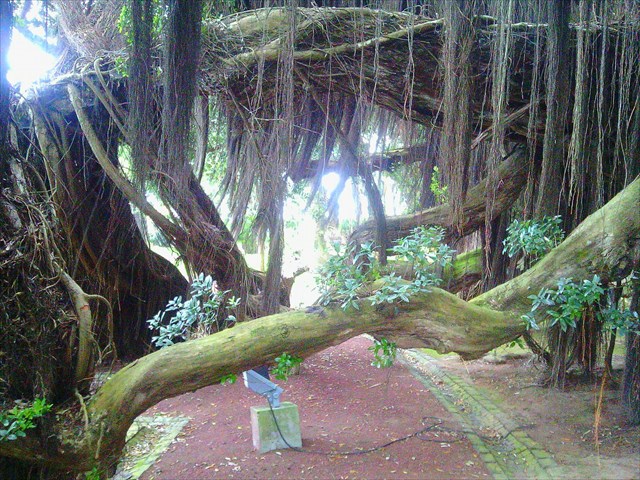
In the garden of this palace there are: camellias, azaleas and hydrangeas, large trees, one endemic vegetation field and a variety of subtropical exotic species (banksias, pines, melaleucas, yuccas, cycads, tripe, magnolias, jabuticabas, dragon trees) . The superb Pohutukawa, originally from New Zealand, with the "parterre" center, is the most beautiful that exists on the island.
Near the spring street layout is placed the sculpture "Stop the Time" (2009), in iron, one of the most important contemporary Portuguese sculptors , Rui Chafes. On the western side garden, remains a work of the Azorean artist Graça Costa Cabral, called "island" in iron and marble.
This garden is classified as Regional Monument since 2000.
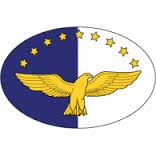
The Palace of “Santana”
The “Santana” Palace, seat of the Presidency of the Government of the Azores and official residence of the President of the Government since 1980, is set in a magnificent park in the northern part of the city of Ponta Delgada, neighbor Jose do Canto Garden and the Chapel of St. Anne. It is a Cimeiro space of institutional representation, where derive the acts and official events of the utmost solemnity, having stayed here and visited the Portuguese Republic presidents, kings and members of royal families, as well as leading figures in regional, national and international level.
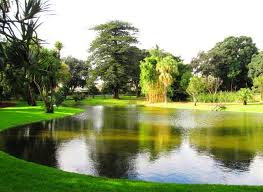
It had been owned by Jácome Correia family, earth-lieutenant of the island of São Miguel class, further enriched by the trade of orange with England. This heritage complex was built by José Morgado Jácome Correia (1816-1886), from 1846, being in 1866 the palace ever built and inhabited, as well as your garden planted. For lack of offspring, succeeded him held his mother and, after her, her only brother Pedro Jácome Correia (1817-1896), 1ºconde of Jácome Correia, Pardo United, deputy head of the regenerator and local Party, as the title in two lives of Jácome Correia Conde. He inherited it after Aires Jácome Correia (1883-1937), who saw these spaces are considered Royal Palace, by having remained King Carlos and Queen Amelia during the royal visit made to the Azores em1901.Será the second daughter the Jácome Correia de Pombal, D. Josefa Gabriela Borges de Sousa Jácome Correia Hintze Ribeiro, em1977, sells the property to the Azores.
Established in neoclassicism style, the Palace is close to the type of architecture in vogue in Europe at the time. The architect is unknown, but is thought to José Jácome have commissioned the project in London, presumably by his cousin, friend and neighbor Jose do Canto. It consists of three bodies, with the main facade of the high a sculptural group representing mythological Apollo between two Muses and, at the ground floor, the side walls, four statues in marble, and resenting the Writing and Reading (the spring) and Industry, Navigation (to the west).

INFORMATION:
This cache is part of GeoTour AZORES and was part of Geotour Green Island / Greenisland.
A CACHE:
The cache is in Santana Palace Garden (Chair of the Regional Government), place of much symbolism and importance to the Azores. Arriving at the reception, within the public opening hours, you must purchase your entrance ticket.
Visiting the garden should do so only through the authorized route.

The box has a NO conventional format.
You should carry written material.
Please do not to post pictures that can report the cache.

TIME:
Tuesday to Friday: from 10H00to 16H00
Saturdsyd: from 9H30 to 18H00



